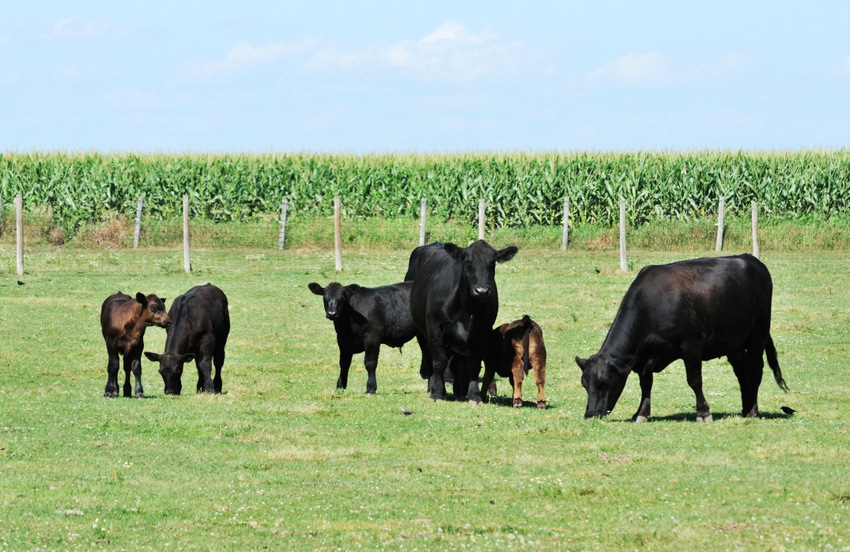Economist says plenty of new-crop calves will be marketed this fall, with feeder supplies ample through 2020.

Does the U.S. Department of Agriculture's latest “Cattle on Feed” report suggest that monthly feedlot inventories have peaked cyclically? Oklahoma State University Extension livestock marketing specialist Derrell Peel says probably not — at least not yet.
The report showed Sept. 1 feedlot inventories at 10.98 million head, a 1.3% decline from last year and the first year-over-year decrease in monthly cattle on feed totals since December 2016.
August 2019 placements declined more than expected, dropping 9% from last year, which Peel said was partly in response to the market impacts of the Tyson Foods beef plant fire on Aug. 9.
According to Peel, the short-term disruption from the plant fire in August and early September likely delayed some feedlot placements.
Additionally, a larger 2018 calf crop and generally good forage conditions in 2019 likely mean that significant numbers of yearlings still remain to be marketed in the last quarter. Peel said the estimated 2019 calf crop is equal to 2018 levels, meaning that plenty of new-crop calves will be marketed this fall, with feeder supplies ample through 2020.
“It will likely be a few more months before we will see sustained year-over-year decreases in feedlot inventories,” Peel said.
Steiner Consulting Group (SCG) noted in its “Daily Livestock Market” that placements were lower across all weight categories, with the biggest decline in the placement of light calves. “Indeed, good pasture conditions have allowed producers to add more pounds outside the feedlot in recent months,” SCG reported.
Placements of cattle under 700 lb. in August totaled 685,000 head, 10.5% lower than a year ago. SCG said in the last four months, placements of cattle weighing 600 lb. or less have declined by 185,000 head, down 11% from a year ago. Placements of cattle weighing 600-699 lb., on the other hand, were down 150,000 head, or 11.5%, versus a year ago.
SCG pointed out that good pasture conditions and lower returns have encouraged producers to keep calves outside feedlots.
Placements of cattle weighing more than 700 lb. over the last four months have been near exactly the same as a year ago, SCG noted.
“As long as the marketing rate stays near what it was last year, we should see the supply of market-ready cattle slowly decline, resulting in tighter supplies of market-ready cattle by the end of the year and in early 2020,” the firm said.
The key, however, is the marketing rate this fall, SCG added.
Peel noted that feeder cattle prices in Oklahoma improved last week, with nearby feeder futures rallying to fill the August downward gap.
“The supportive 'Cattle on Feed' report and growing demand for wheat stockers will likely add further market support in the near term, at least until larger runs of calves and yearlings show up in October,” Peel said.
This is the first time since October 2014 that the inventory has been lower than the prior year, USDA's Gary Crawford said.
Does this indicate an impending contraction of the herd? USDA livestock analyst Shayle Shagam said, “You really can't tell.”
He explained, “Part of it is going to depend on what cow/calf operators are looking at. At the moment, their margins are weak to negative. So, in that respect, you're getting a signal that you probably don't want to expand, but it's not a very strong signal.”
As long as there is forage and grass, Shagam said producers may be taking a “wait-and-see” attitude, hoping that the declining numbers could result in increasing prices.
About the Author(s)
You May Also Like





